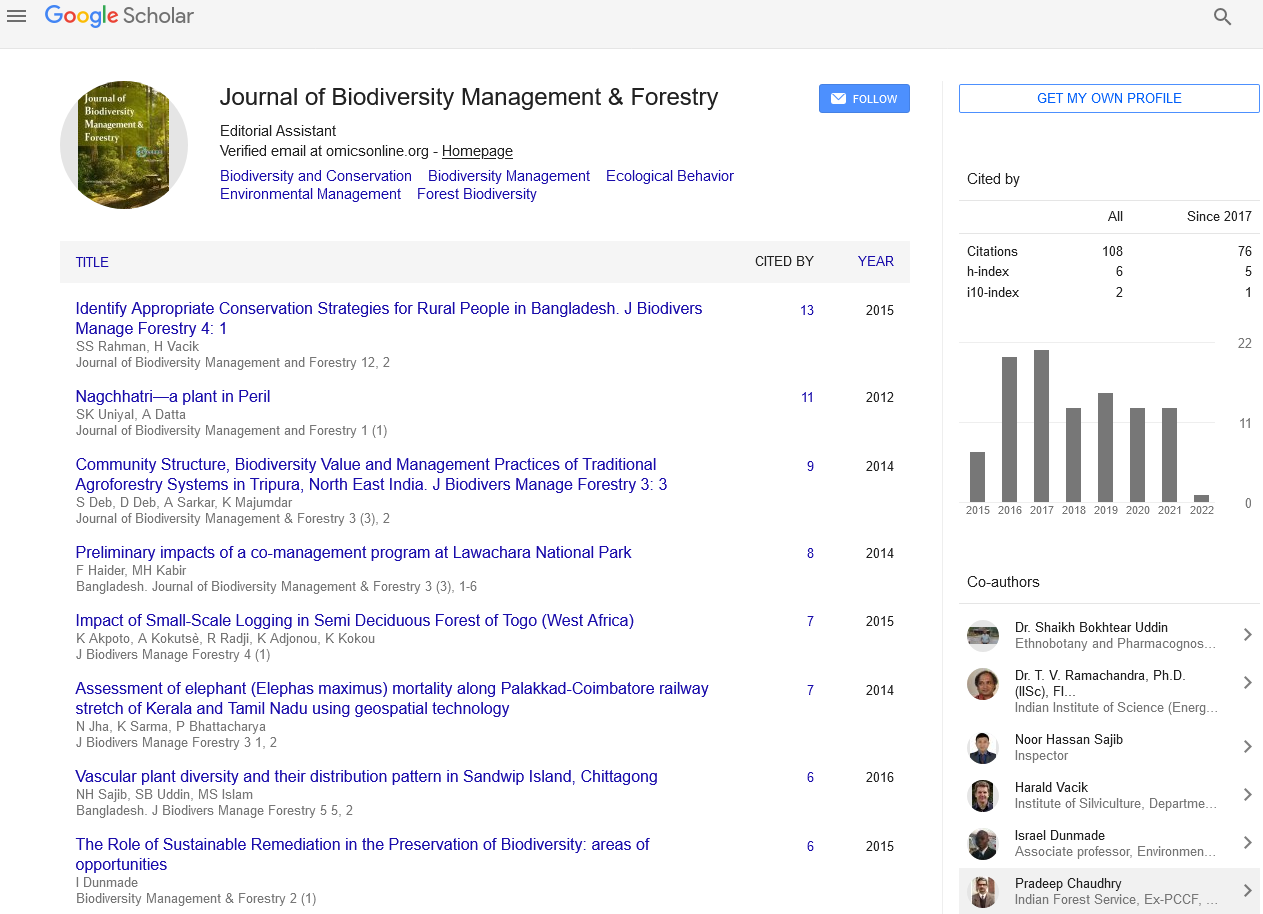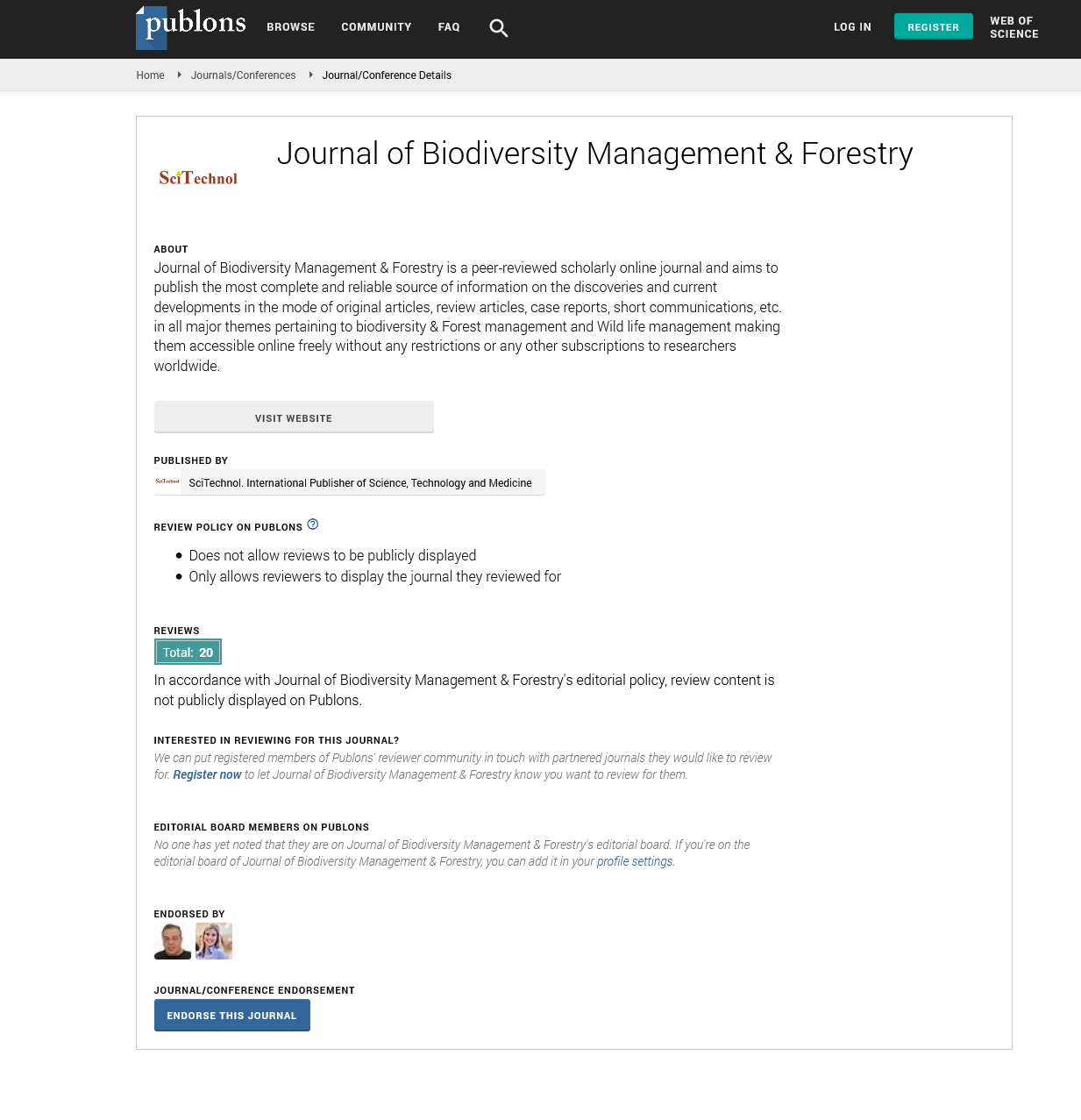Dynamics and drivers of sea level rise in Southwest Bangladesh's coastal region: A global, regional, and local perspective
Ashrafuzzaman
Nova University of Lisbon, Portugal
: J Biodivers Manage Forestry
Abstract
Global greenhouse gas emissions have caused sea level rise (SLR) at a global and local level since the industrial revolution, mainly through thermal expansion and ice melting. Projections indicate that the acceleration of SLR will increase in the near future. This will affect coastal and deltaic populations worldwide, such as in Bangladesh, where almost half of the population resides in regions lower than 5 m above sea level. This study found three coastal tidal gauges and five deltaic gauge stations, which showed increases in SLR at greater rates than the regional and global averages. This research also used satellite altimetry data to analyze regional and global SLR averages in the recent past and the 21st century. There is a trend towards increasing sea level based on results from three tide gauge stations: Char Changa with 7.6 mm/yr, Hiron Point at 3.1 mm/yr from 1993 to 2019, and 14.5 mm/yr at Cox’s Bazar from 1993 to 2011. Based on the linear trend from these time frames, it is projected that SLR in Char Changa will increase by 228 mm from 2020 to 2050, and by 608 mm by 2100, at Hiron Point by 93 mm in 2050 and 248 mm by 2100, and at Cox’s Bazar by almost 435.7 mm by 2050, and more than 1162 mm by 2100. Based on an average from satellite altimeters, assuming a linear increase in SLR, the Bay of Bengal shows an increase of 0.4 mm compared to the global trend. Other river delta stations in the study area also show increasing SLR, specifically, at Kalaroa, Benarpota, Kaikhali, Tala Magura, and Elarchari. Kalaroa and Benarpota show the highest, with SLR of >40 mm/ yr. It is also observed that increasing SLR trends are far higher than coastal tide gauges, indicating that physical processes in the delta region are affecting SLR, further contributing to either an increase in water volume/SLR or activating land subsidence. This is partly due to the subsidence of the delta as a result of natural and anthropomorphic effects, as well as an increase in Himalayan glacier melting due to global warming. This indicates that Bangladesh coastal areas will soon experience a far greater SLR than the rest of the Bay of Bengal or other global coastal areas.
Biography
Ashrafuzzaman is a dedicated climate researcher at Nova University of Lisbon, Portugal, with a focus on sea level rise and its multifaceted impact on vulnerable coastal regions. His work examines the dynamics and causes of sea level rise in Southwest Bangladesh, analysing the phenomenon at global, regional, and local scales. With expertise in coastal environmental science, Ashrafuzzaman’s research seeks to illuminate the factors driving sea level changes and their consequences for communities facing increased risks from flooding and land loss. His insights contribute to the broader understanding of climate adaptation strategies, providing valuable knowledge for policymakers and local stakeholders working toward resilience in the face of rising seas.
 Spanish
Spanish  Chinese
Chinese  Russian
Russian  German
German  French
French  Japanese
Japanese  Portuguese
Portuguese  Hindi
Hindi 
